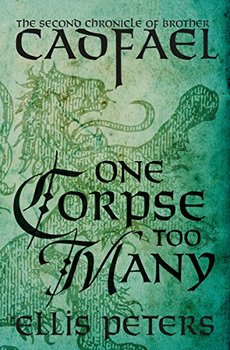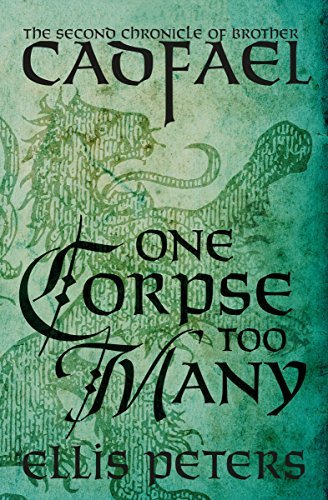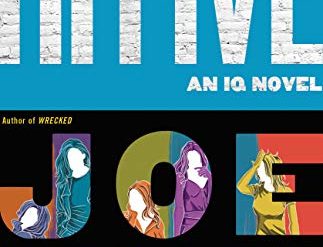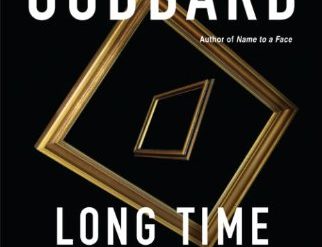
If there had been a detective in medieval times, he might well have looked a lot like the Benedictine monk of the venerable Chronicles of Brother Cadfael. A medieval detective could have depended only on his five senses, his experience of life, and his knowledge of the natural world. Brother Cadfael’s expertise as an herbalist is often crucial, but in other respects his success rests chiefly on his powers of observation and deduction. There was no fingerprinting or DNA evidence in the Middle Ages! In fact, the scientific method was unknown.
Estimated reading time: 5 minutes
Brother Cadfael is caught in the middle of a civil war
In One Corpse Too Many, the second book in the Chronicles, Brother Cadfael becomes embroiled in an investigation that places him squarely in the middle of a civil war. He supports neither side. Two young men who are in service to one of the combatants were spiriting away a hoard of gold and jewels that belonged to their liege lord, King Stephen. One turns up dead, the other very much alive and still in possession of the King’s “treasury.” To enliven the tale, two lovely young women become involved as well. Cadfael’s challenge is to discover the identity of the killer, help the murdered man’s companion to escape with the treasure, and ensure that the two women’s roles in the drama are undiscovered. It’s all rather complicated but a great story.
One Corpse Too Many (Brother Cadfael #2) by Ellis Peters (1979) 292 pages ★★★★☆
What was life like for a medieval detective?
It’s difficult for us in the 21st century to imagine what life must have been like in medieval England. Early in the 12th century, when Brother Cadfael roamed the western reaches of the country acting the part of a medieval detective, the population of all England was less than two million. It’s more than 53 million now, making England one of the most densely populated nations in Europe. Nine hundred years ago, vast stretches of land lay untilled and unpopulated. The largest city in England at the time of the Norman Conquest was London. Only 10,000 people lived there then, and the number couldn’t have been much greater a mere half-century later.
The Middle Ages in Europe were, famously, a time when few outside the Church could read and write. As late as the 16th century, 90% of the men and 99% of the women in Britain were illiterate in English. Learning was largely the province of the monasteries, yet even the monks who laboriously copied books by hand were often themselves illiterate. The first European university was founded in Bologna only in 1088, just half a century before the period brought to light in the Chronicles. Oh, and there was no such thing as a police department.
Ignorance and superstition would confound a medieval detective
Ignorance and superstition held sway in medieval times. Brother Cadfael, acting as a detective, is forced to deal with the primitive beliefs of people all around him. The worship of saints, as illustrated in A Morbid Taste for Bones, the first novel in the Chronicles, was obsessive. Yet the simple-minded Catholicism Ellis Peters illustrates in the novels was only one aspect of the beliefs of the period. So-called pagan faiths still haunted many minds. A modern detective transported into medieval England would likely be baffled by the fanciful reports of witnesses. Eyewitness testimony today is notoriously unreliable. In 1138 witnesses would be likely to report imagined sightings of ghosts, gremlins, and saints as well as signs of reality.
The vast majority of English men and women lived in serfdom in the 12th century. It was more than 200 years later when the end of serfdom began with the Peasants’ Revolt. The characters who surround Brother Cadfael show few signs of the oppression in which nearly all of them would have lived. In reality, none but a few would have been likely to tell an investigator anything but exactly what he clearly wanted to hear. If you travel in rural areas in very poor countries, as I have, you’ll understand exactly what I mean.
A magical talent for healing
Brother Cadfael seems to have an almost magical talent for healing. In fact, it seems quite likely that his herbs and potions would have been far less effective than the novels suggest. Even today, nearly a millennium later, medicine is often a hit-or-miss business. Just ask any honest doctor. And don’t pay attention to the doctor shows on TV.
One Corpse Too Many is set in the year 1138. England then was in the throes of a civil war that is only very sketchily portrayed in the novel. King Henry I had died, as had his only surviving son. His daughter, known in the book as the Empress Maud, was engaged in a bitter battle for the succession with her cousin, Stephen of Blois. Historians recognize the Empress Maud as Empress Matilda, or Empress Maude, who was Empress of the Holy Roman Empire, a German queen, and Queen of Italy. England could then have been only a sideshow for her. However, in 1139, the Empress did cross the Channel into England to claim the throne. Eventually, she captured Stephen and attempted to have herself crowned Queen of England. That never happened. The people of London wouldn’t stand for it.
Brother Cadfael on television
The Chronicles of Brother Cadfael were adapted to television in the 1990s, with Derek Jacobi in the starring role as the medieval detective. The British network ITV broadcast four seasons of a series consisting of a total of 13 episodes from 1994 to 1998. At this writing, the show is available for streaming online on Britbox. Episode 1 in the first season was based on One Corpse Too Many.
About the author
Ellis Peters was the pen name of prolific English mystery author Edith Pargeter. In addition to the 21 books in the Chronicles of Brother Cadfael, she was the author of dozens of other novels under both her own name as well as her pseudonym.
For related reading
You might also enjoy my posts:
- Top 10 mystery and thriller series
- 20 excellent standalone mysteries and thrillers
- 30 outstanding detective series from around the world
- Top 20 suspenseful detective novels
- Top 10 historical mysteries and thrillers
And you can always find my most popular reviews, and the most recent ones, on the Home Page.


























